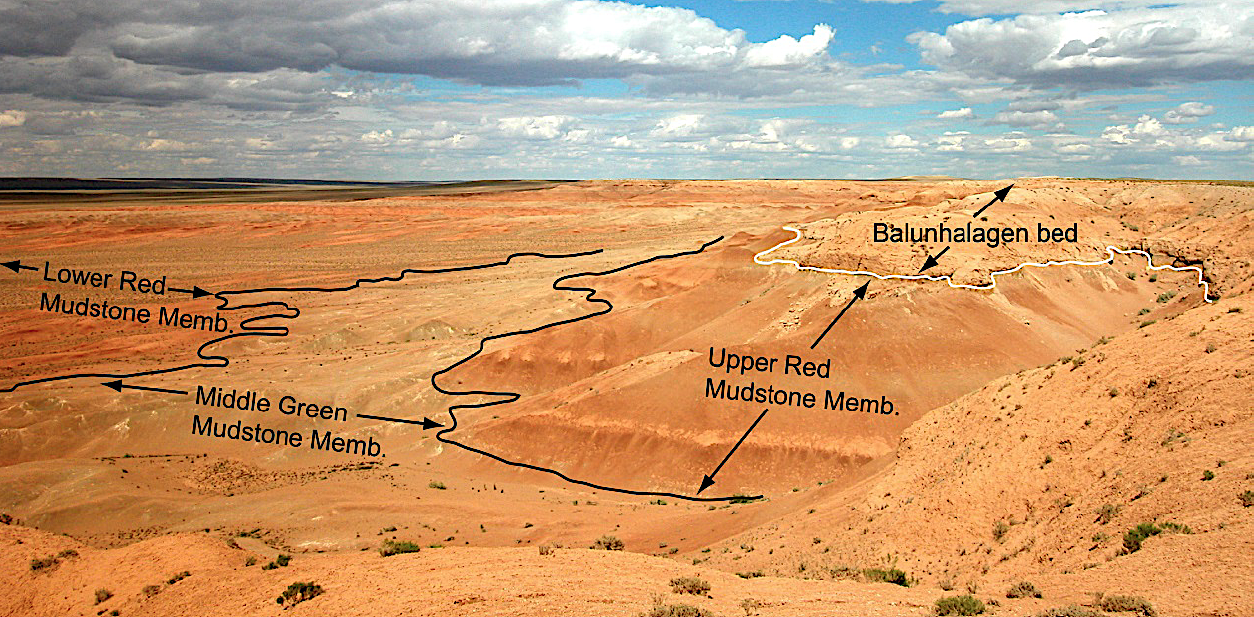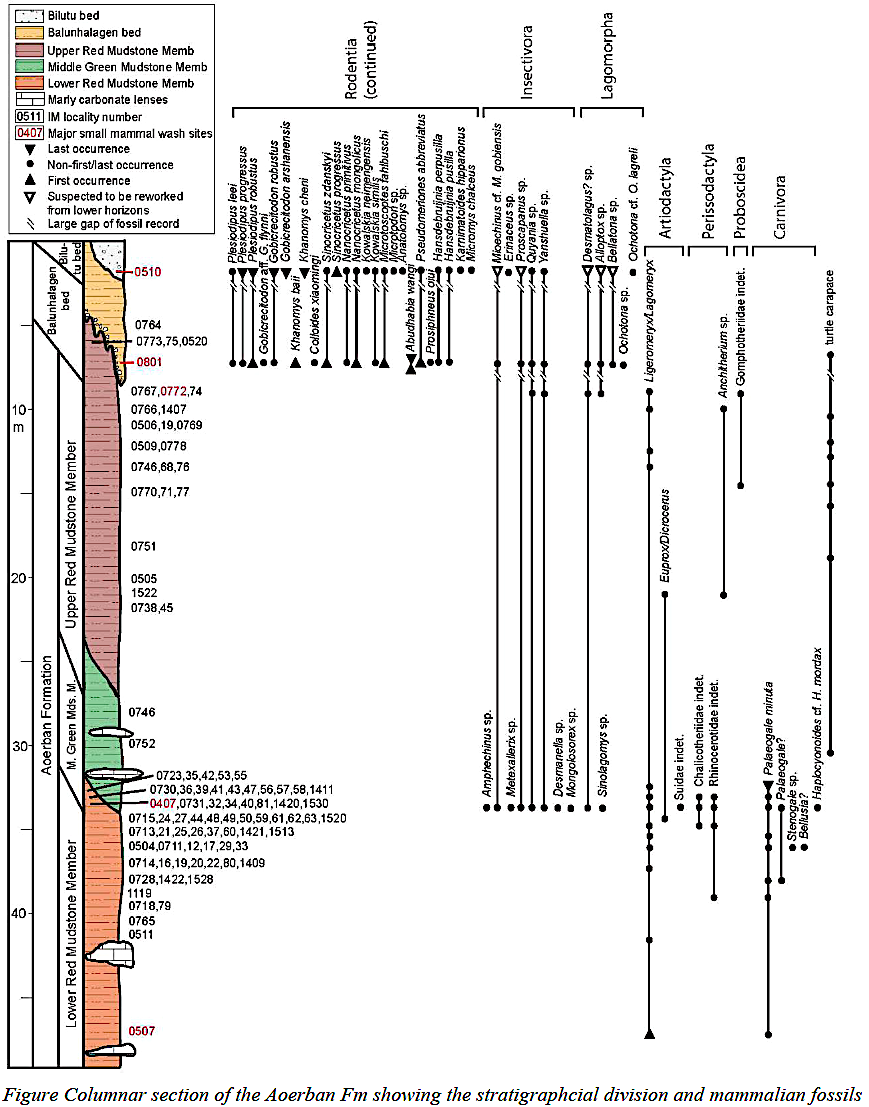Aoerban Fm
Type Locality and Naming
The type section is located at Dahongshan (big red hill) (E113°54′, N43°20′), about 60 km southeast of Sonid Zuoqi County, Xilinhot City, central Nei Mongol. It was named by Wang et al. (2009).
[Figure: Geographic location and geologic map of Aoerban]
Lithology and Thickness
The Aoerban Fm is divided into three members: Lower Red Mudstone Member, Middle Green Mudstone Member, and Upper Red Mudstone Member. Contacts between these members are conformable. The Lower Red Mudstone Member consists of a ~15 m sequence of bright red mudstones and siltstones interbedded with multiple layers of paleosols and a 1~2 m thick green, white, or light grey marly nodular bed. Vertebrate fossils are abundant throughout the exposures, particularly toward the upper part of the member, which is better exposed. The Middle Green Mudstone Member is a ~7 m bed of grayish-green mudstones often containing light grey bands or lenses of marly nodules. This member is substantially less fossiliferous than the red mudstones both above and below. The Upper Red Mudstone Member consists of ~17 m of deep purplish-red mudstones and siltstones with one green mudstone lens (~1 m) near its upper part. Mature paleosol (dark bands) alternate with lighter red beds and pedogenic carbonate nodules are generally small (peanut-size) and not concentrated in layers. Fossils are more abundant in the central part of the exposure. This formation contains abundant mammalian fossils. Its thickness is more than 30 m.
[Figure: Outcrop of the Aoerban Formation, on the Dahongshan Hill]
[Figure: Outcrop showing the boundaries of three members of the Aoerban Fm (black line) and the boundary of the Aoerban Fm and the Balunhalagen Bed Fm (white line)]
Relationships and Distribution
Lower contact
No underlying rock units could be seen.
Upper contact
In the type section, the Aoerban Fm is unconformably overlain by the Upper Miocene BalunhalagenBed Fm.
Regional extent
This formation is restricted to the Aoerban exposures that is continuously exposed in a 3×2 km area within N43°20~21.5′ and E113°53~56′ in Sonid Zuoqi coutny, central Nei Mongol.
GeoJSON
Fossils
Mammals: Amphechinu sp., Mioechinus cf. M. gobiensis, Metexallerix sp., Proscapanus sp., Quyania sp., Yanshuella sp., Desmanella sp., Mongolosorex sp., Prodistylomys mengensis, Distylomys burqinensis, Allodistylomys stepposus, Tachyoryctoides colossus, T. vulgatus, Ayakozomys mandaltensis, A. ultimus, Ansomys lorealis, A. robustus, Tschalimys cf. T. ckhikvadzei, Quadrimys paradoxus, Parameniscomys mengensis, Tamias ertemtensis, Atlantoxerus exilis, A. major, Atlantoxerus sp., Palaeosciurus aoerbanensis, Orientiglis wuae, Miodyromys asiamediae, Ligerimya asiaticus, Asianeomys fahlbuschi, Leptodonotmys lii, Keramidomys fahlbuschi, Pentabuneomys feijfari, Plesiosminthus barsboldi, P. vegrandis, P. asiaticus, Litodonomys minimus, Sinodonomys cf. S. simplex, Sicista prima, Omoiosicista fui, Heterosminthus firmus, H. erbajevae, H. nanus, Metaeucricetodon mengicus, Democricetodon sui, D. lindsayi, D. tongi, Megacricetodon sinensis, Cricetodon sonidensis, Desmatolagus? sp., Sinolagomys sp., Alloptox sp., Palaeogale minuta, Palaeogale?, Stenogale sp., Bellusia sp., Haplocyonoides cf. H. mordax. (Wang et al., 2009; Qiu and Li, 2016; Wang et al., 2019).
[Figure: Columnar section of the Aoerban Fm showing the stratigraphcial division and mammalian fossils]
Age
Depositional setting
It is interpreted as a river-lake environment.
Additional Information


